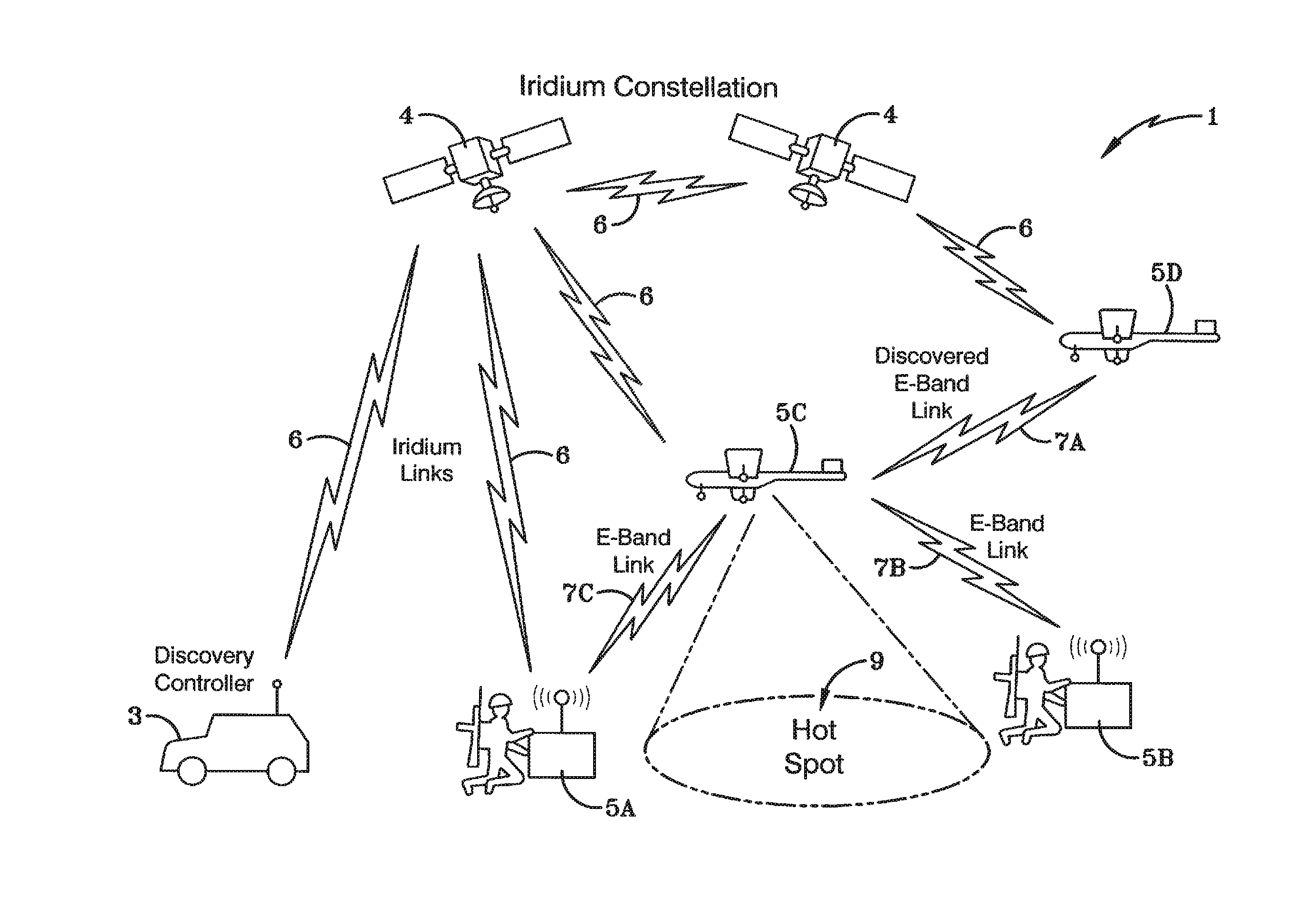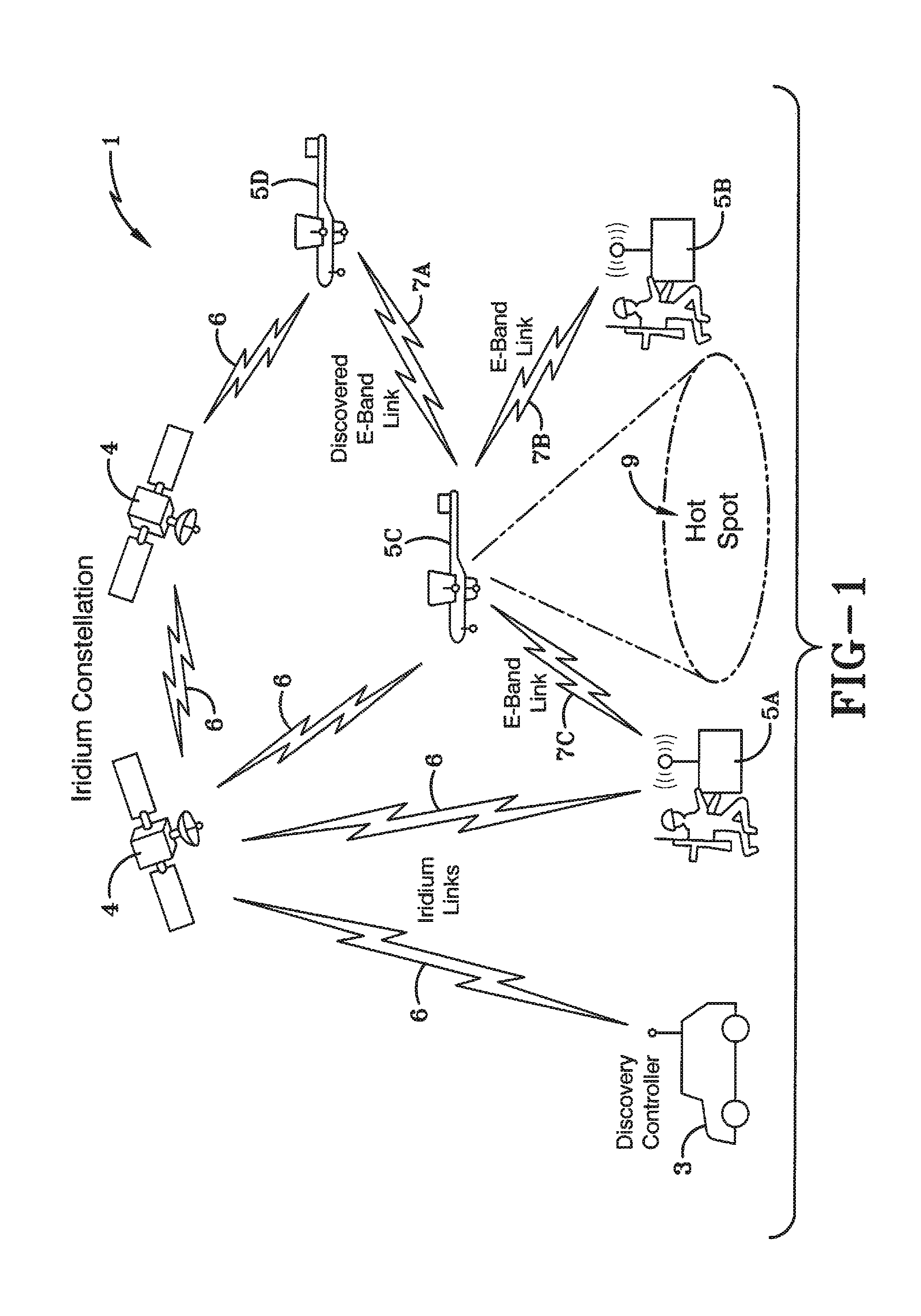Discovery and acquisition methods for directional networking
a technology of directional networking and acquisition methods, applied in the field of apparatus, systems and methods for computer networking, can solve problems such as substantial resources being wasted on directional links
- Summary
- Abstract
- Description
- Claims
- Application Information
AI Technical Summary
Benefits of technology
Problems solved by technology
Method used
Image
Examples
Embodiment Construction
[0030]FIG. 1 illustrates the preferred embodiment of a system 1 for managing nodes entering a network. The system 1 includes a global network controller (NC) 3 that is used to register the location and status of nodes capable of directional networking links. As indicated in FIG. 1, the NC 3 also acts as a discovery controller / server. At one point in time, the system 1 may include three nodes 5A-C already connected to the network. Later, a disconnected node 5D may enter the network and desire to connect to the network. It may be aware of the NC 3 and send slow messages to it over slow links 6. For example, it could send slow messages to the NC through a slow satellite link such as through the Iridium constellation of satellites 4. When the disconnected node 5D becomes sufficiently close to form a link, the NC 3 starts passing the location of the new neighbor node 5D to each of the nodes 5B, 5C it believes can now form a new directional link 7A. It might also give navigational guidanc...
PUM
 Login to View More
Login to View More Abstract
Description
Claims
Application Information
 Login to View More
Login to View More - R&D
- Intellectual Property
- Life Sciences
- Materials
- Tech Scout
- Unparalleled Data Quality
- Higher Quality Content
- 60% Fewer Hallucinations
Browse by: Latest US Patents, China's latest patents, Technical Efficacy Thesaurus, Application Domain, Technology Topic, Popular Technical Reports.
© 2025 PatSnap. All rights reserved.Legal|Privacy policy|Modern Slavery Act Transparency Statement|Sitemap|About US| Contact US: help@patsnap.com



